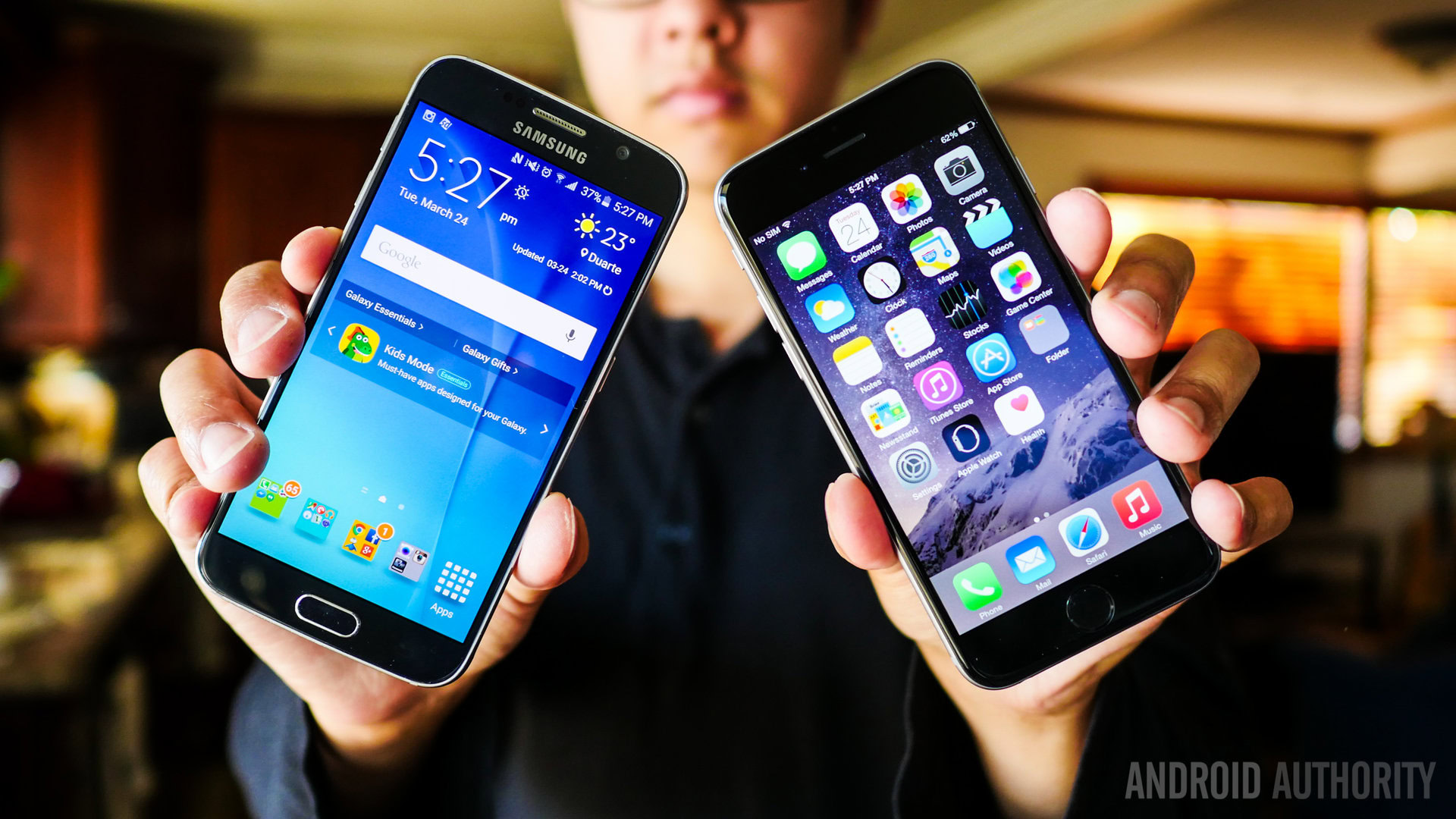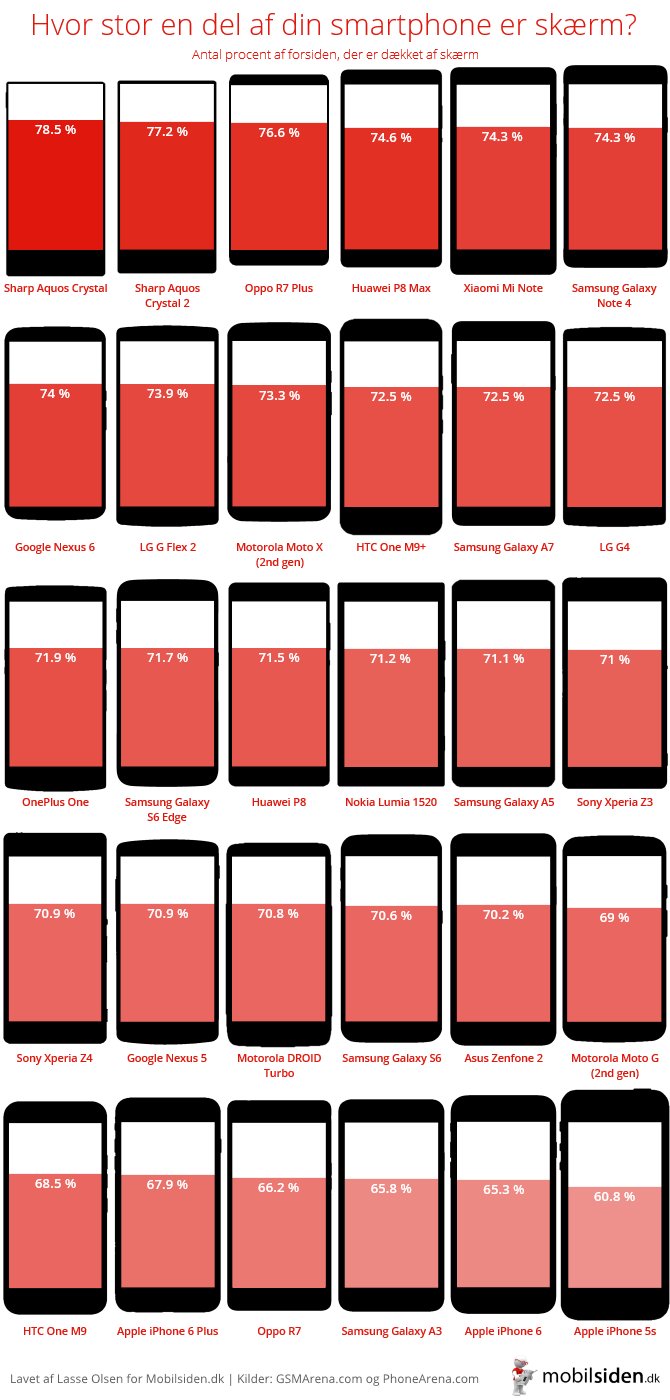Affiliate links on Android Authority may earn us a commission. Learn more.
Infographic: the phones with the highest and lowest screen-to-body ratios

So you want your next smartphone to feature a large screen and a compact body. That sounds like the ultimate first world problem, but you know what, we feel your pain. With new smartphones regularly coming out in the 5.5-inch range, and some skirting tablet territory, a compact build is more important than ever.
If a high screen-to-body ratio is what you’re after, this simple infographic put together by Danish website Mobilsiden should come in handy. Showing 30 modern smartphones running Android, iOS, and Windows Phone, the infographic is a clear illustration of an aspect that not many phone buyers consider before handing over the credit card. Phones with the same screen size can be very different in actual size: just compare the 5.5-inch LG G4 (72.5%) with the 5.5-inch iPhone 6 Plus (67.9%).

Ranking first are the two generations of the Sharp Aquos Crystal, both of which feature striking “no-bezel” designs. But this comes at a price, as the lack of the upper bezel means you will have to put up with the front camera being located on the bottom, in an area where it can be easily blocked by your palm.
Coming up next is the just-launched OPPO R7 Plus, the ridiculously large HUAWEI P8 Max (6.8 inches!) and the Xiaomi Mi Note. The infographic shows that the larger the phone, the higher the screen to body ratio typically is. Though a high ratio doesn’t necessarily mean you will have the most compact body possible: see the Mi Note.
One last note: sometimes a lower screen to body ratio enables the addition of some nice features. Case in point, the One M9 and its big BoomSound speakers.